Review: SDS Imports Tisas 1911 Bantam
Long before plastic pistols came on the scene, the M1911 was “winning world wars” and protecting citizens on the home front with its familiar styling and authoritative .45 ACP chambering. But it wasn’t without fault—Browning’s design was indeed cumbersome and a bit heavy, even by yesterday’s standards. Colt took a swing at these issues with its Commander pistol, which sported a lightweight aluminum frame and an abbreviated 4.25″ barrel, arguably inventing the M1911 carry platform. Fast forward a few years, and the Turkish company Tisas entered the market, reproducing some of the most iconic designs and even introducing a few that are unique enough to call its own. Meet the 1911 Bantam, a compact M1911 pistol brought into the country by SDS Imports that is easy to carry, fun to shoot and distinctly styled.
The 1911 Bantam is a semi-automatic centerfire design chambered in .45 ACP. In typical M1911 fashion, it handles the cartridge’s pressure during firing by having the barrel and slide initially recoil as one unit before the two separate. This allows enough time to pass for the pressure to dissipate before the action opens to expel the fired case and re-cock the external hammer. As it returns to battery, the slide strips a fresh round from the eight-round detachable box magazine.
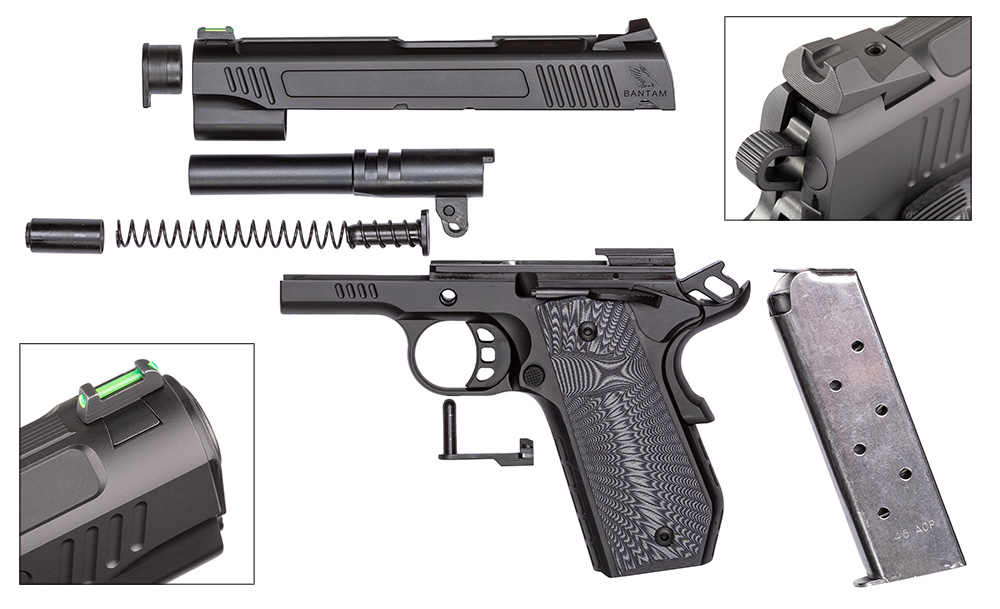
- Buy All-American!
- Bring health and vitality back to your body with these non-transdermal patches
- Get your Vitamin B17 & Get 10% Off With Promo Code TIM
- How To Protect Yourself From 5G, EMF & RF Radiation - Use promo code TIM to save $$$
- The Very Best All-American Made Supplements On The Maret
- Grab This Bucket Of Heirloom Seeds & Save with Promo Code TIM
- Here’s A Way You Can Stockpile Food For The Future
- Stockpile Your Ammo & Save $15 On Your First Order
- Preparing Also Means Detoxifying – Here’s One Simple Way To Detoxify
- The Very Best Chlorine Dioxide
- All-American, US Prime, High Choice Grass-Fed Beef with NO mRNA, hormones or antibiotics... ever!
Turkish guns are often viewed as sub-par, but firearms like this one should go a long way toward demonstrating that this is not always the case. Superb craftsmanship is evident in all components of the pistol, particularly the slide and barrel. Machined from steel bar stock, neither show any tool marks, fitting lock-and-key to each other. Stylish lightening cuts throughout eliminate weight where possible. Fluting on the barrel hood reduces drag, thereby aiding cycling, particularly when the pistol is fired with an imperfect grip. Lastly, the Bantam’s slide is fitted with a drift-adjustable U-notch rear sight and fiber-optic front sight. This pairing works wonders for rapid sight acquisition and helps to get well-aimed rounds downrange in short order.
Machined from billet aluminum, the frame of the Bantam is designed to be light enough to carry but strong enough to resist deformation during firing. A “bobtail” cut in the bottom, rear corner of the frame provides relief for the heel of the hand and makes the pistol a bit more concealable. Other features include slot-style stippling on both the frontstrap and backstrap, as well as similar indexing points toward the front end of the frame.
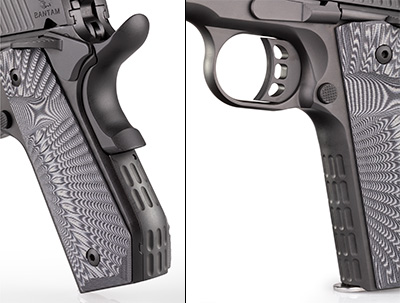
To create a comfortable grip, the manufacturer built this handgun with an extended beavertail to allow for higher hand placement and protection against hammer bite. Purchase is further aided by the aggressive-appearing G10 stock panels that turned out to be surprisingly gentle on the skin during our testing. The frame is also home to a skeletonized hammer and trigger that delivers a faster lock time and a snappier reset, respectively. As for controls, they remain relatively standard; a push-button magazine release and slide stop can be found on the left side of the pistol. The Bantam’s only non-standard controls are the bilateral safety levers, which were a welcome addition for our left-handed testers.
Our range day included a formal accuracy test alongside practical use on steel targets. All testers noted that the trigger broke remarkably cleanly, with further inspection revealing a measured average break at 5 lbs., 9 ozs.—a product of its Series 70 internals and lack of a firing pin block. A 215-round function test was enough to determine that the Bantam offered all-day comfort without any notable rubbing points, making it an excellent range pistol. It also recovered well between shots, and although lightweight, it managed .45 ACP recoil quite nicely. There were no malfunctions of any kind.
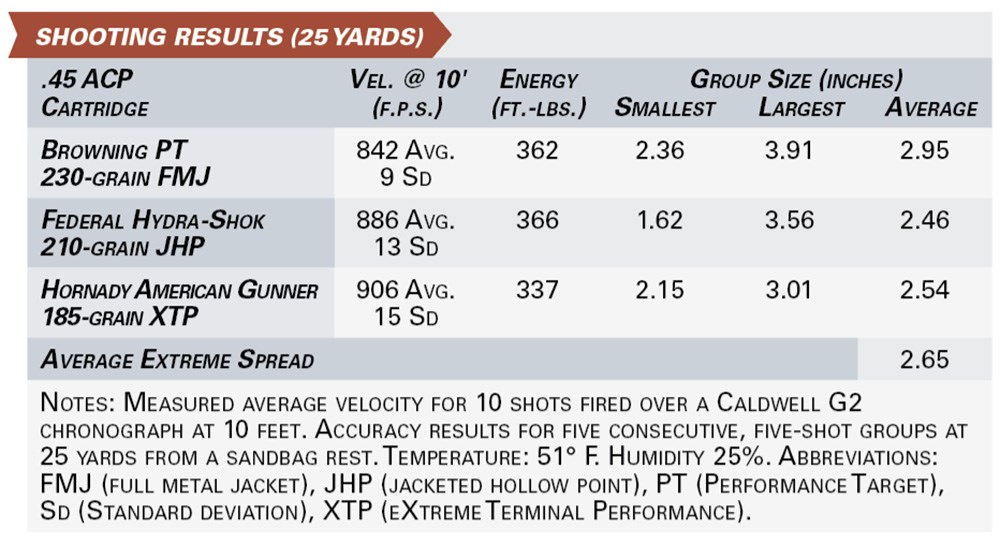
Before leaving the range, we fieldstripped the handgun and gave it a routine oiling. Taking it apart was no different from any other M1911. We started by ensuring the gun was empty before rotating the barrel bushing and removing the plug and recoil spring. With those parts removed, we then rotated the bushing the other way and pulled it off. This allowed us to easily press the slide back to the takedown notch, pull out the slide stop and slip the slide and barrel forward off the frame. The parts fit together quite snugly but were not so excessively tight that disassembly was a chore. After a final inspection, we re-assembled the pistol by straightforwardly reversing the steps.
Our time with the Tisas 1911 Bantam was highly favorable, suggesting a plethora of uses for this handgun. At the top of the list is concealed carry, of course, particularly OWB wear. But its unburdened construction also lends it nicely to the competitive circuit, and weekenders just looking to punch paper and ring steel will find the Tisas Bantam to be a great choice.
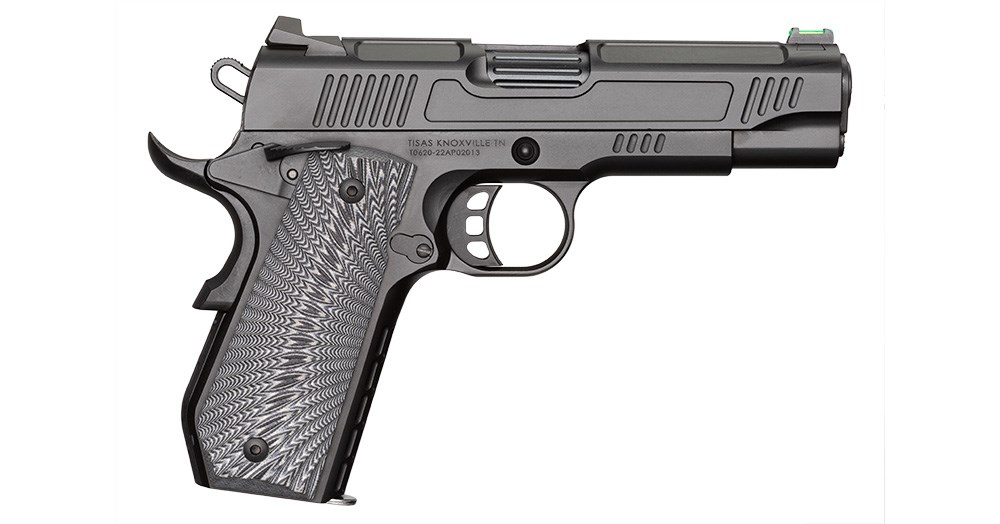
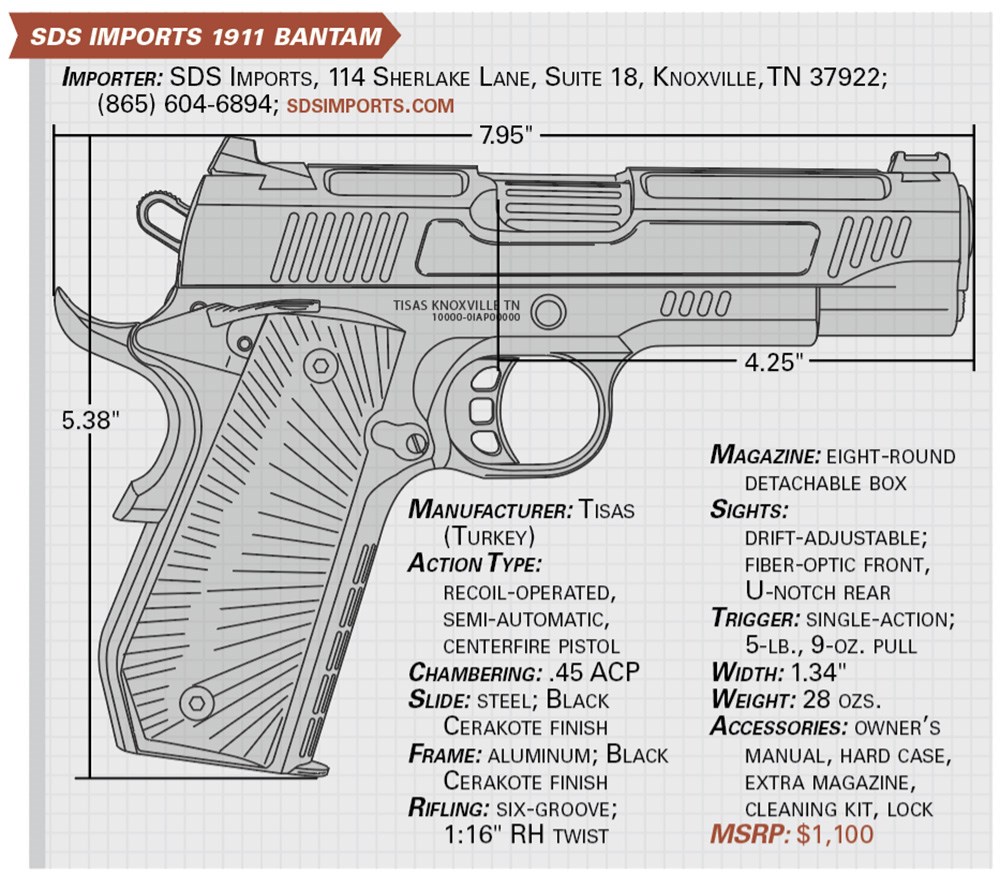
Article by AMERICAN RIFLEMAN STAFF
Don't forget to like us on Facebook and follow us on Twitter.













